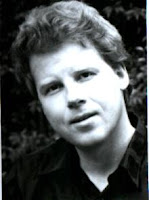 St. Gertrude’s Chapel (shown in a 1830 engraving at right) was built in the late fourteenth century by the Bruderschaft of St. Gertrude, listed in 1356 as one of eighteen charitable fraternities associated with the Jakobikirche in Hamburg. Like similar orders throughout Europe, the fraternity promoted good works through financial support of the church and participation in its religious activities. Members could thereby improve their reputation in the city and increase their chances of gaining salvation. St. Gertrude’s Fraternity was chiefly devoted to caring for the poor and the sick, especially persons afflicted with leprosy. The chapel land was originally known as “der wüste Kirchof” (the desolate churchyard) and “platea leprosorum” (place of the lepers).
St. Gertrude’s Chapel (shown in a 1830 engraving at right) was built in the late fourteenth century by the Bruderschaft of St. Gertrude, listed in 1356 as one of eighteen charitable fraternities associated with the Jakobikirche in Hamburg. Like similar orders throughout Europe, the fraternity promoted good works through financial support of the church and participation in its religious activities. Members could thereby improve their reputation in the city and increase their chances of gaining salvation. St. Gertrude’s Fraternity was chiefly devoted to caring for the poor and the sick, especially persons afflicted with leprosy. The chapel land was originally known as “der wüste Kirchof” (the desolate churchyard) and “platea leprosorum” (place of the lepers).In 1391 the fraternity began construction of the chapel, probably assisted by a guild of masons known as the “Mauerleute.” Its first stage was an octagonal Gothic-domed structure, twenty-five feet on a side, completed in 1399. This octagonal shape resembled other burial buildings and pilgrimage chapels fashionable in the fourteenth and fifteenth centuries, in Northern Europe often named for St. George or St. Gertrude of Nivelles, a seventh century abbess. Since the chapel stood within the parish of the Jacobikirche, regular masses in addition to funerals were conducted there by the priests of that church until the Reformation.
In the fifteenth century the building’s size was increased by adding a chancel area to the east side of the octagon and attaching two small wings on the north and south sides of the domed area. The Mason’s Guild owned the north wing. No precise information about the dates of these additions has survived, but they seem to have existed by 1500, when the chapel assumed its final size and shape. During this same period, the burial of the dead, including the making of coffins, became the chief activity of the chapel, supported by the fraternity. Poor women were given lodging in little houses nearby in exchange for assistance with burial preparations.
After the Reformation reached Hamburg in 1528-29, regular church services were no longer held in the chapel, but the burial work and other charitable activities of the fraternity continued. In 1578 renovation work began so the building could be used for Protestant services. This was completed in 1580, and the chapel was dedicated for the second time by Jakob Kröger, a pastor of the Jacobikirche. From this time on, the Jacobi pastors conducted regular preaching services there on Tuesdays and Thursdays, the chapel functioning as a church for the poor, administered by the Jacobikirche. This also meant that the organist of the larger church, Jacob Prætorius I (to 1586) and Hieronymus Prætorius (from 1586 to 1629), served at St. Gertrude’s Chapel.
After a fire in June 1606, the chapel underwent extensive renovation and was refurnished with a new pulpit, clock, seats, and organ. The following April it was dedicated for the third time in the festival service that will be recreated in Magnificat’s concerts.
From 1697 until the middle of the eighteenth century St. Gertrude’s Chapel enjoyed a lively musical life and was especially important as a site for Passion performances in Hamburg. Although its musical importance declined after 1800, the building was kept in good condition until the great Hamburg fire of 1842, when it burned during the evening of May 7th.
Despite repeated proposals to rebuild the chapel, the ruins were finally cleared away and it was never rebuilt. The name of St. Gertrude was transferred to a large church built between 1882 and 1885 in another area of the city. The chapel’s former site near the Jacobikirche in central Hamburg is now a small park and children’s playground called the Gertrudenkirchhof.
